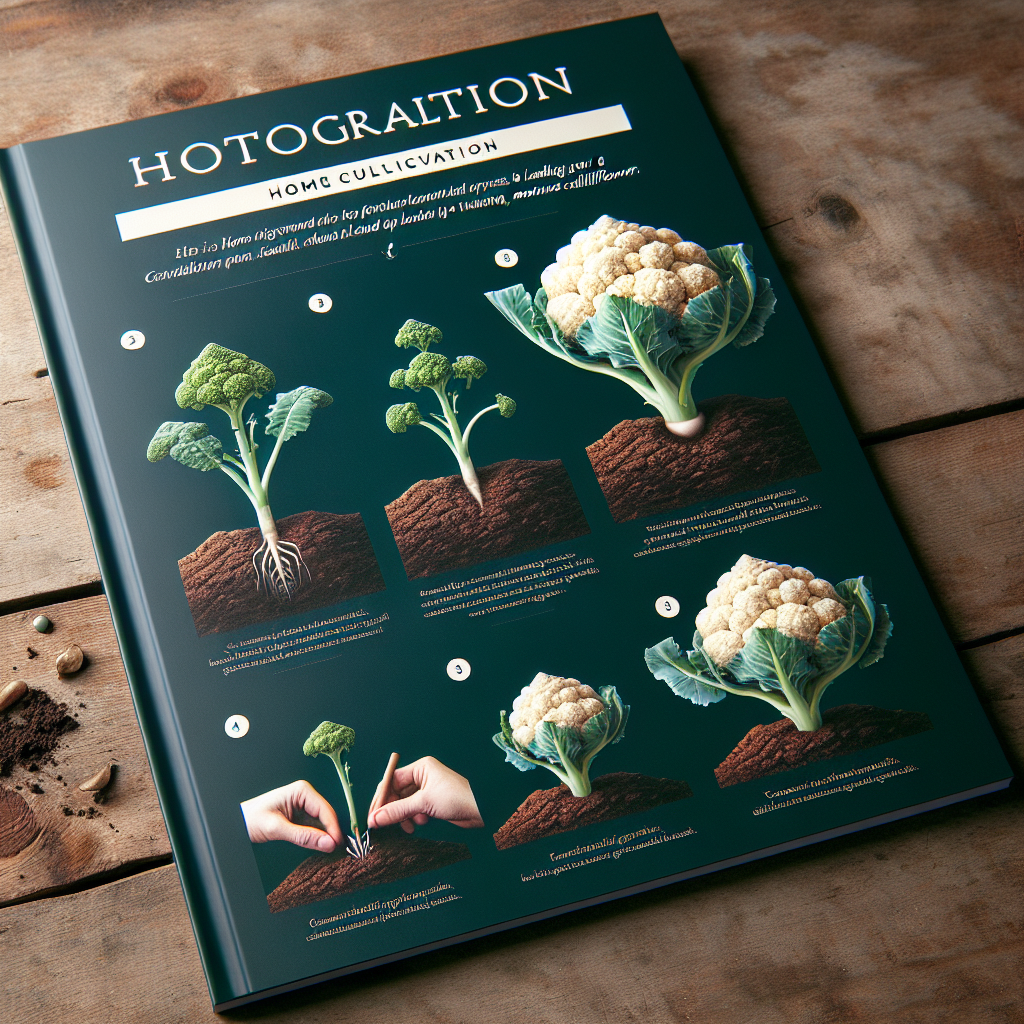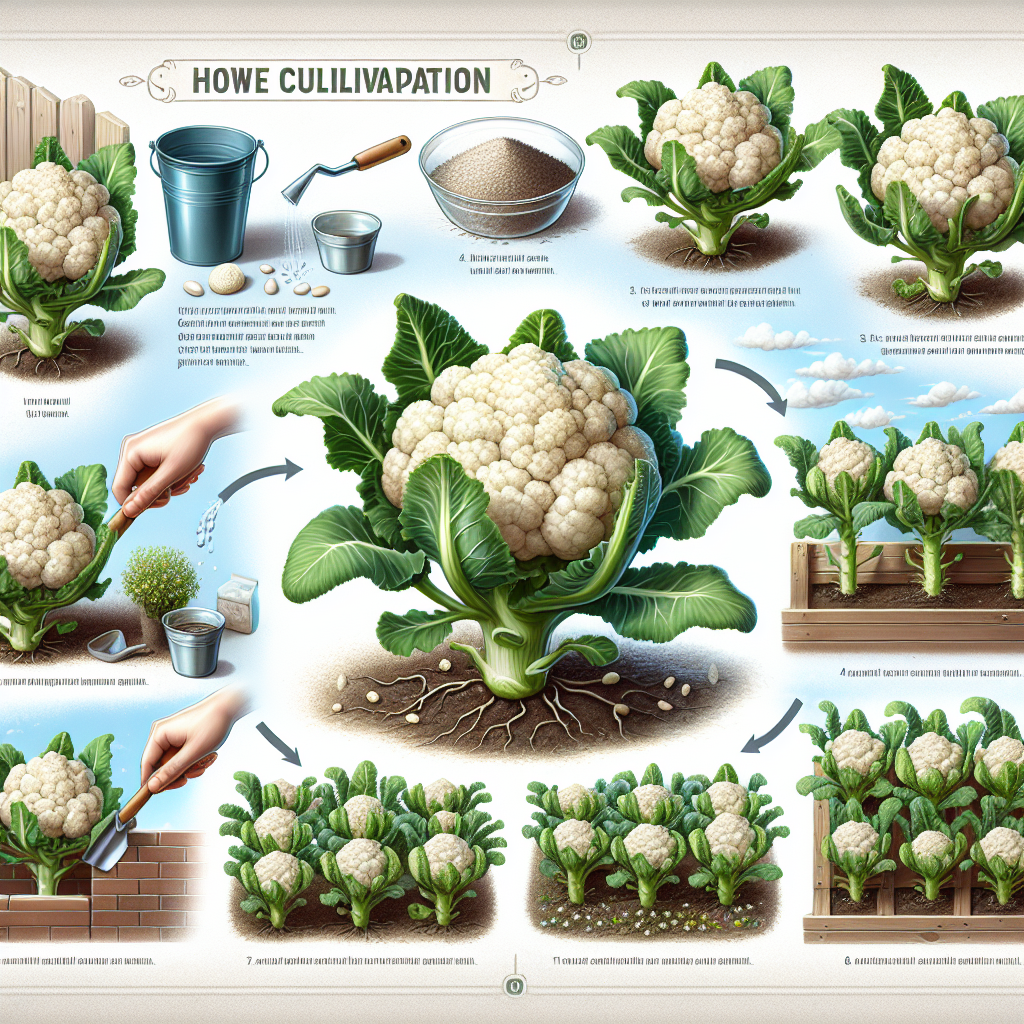Growing Your Own Cauliflower: A Guide to Successful Home Cultivation
Cauliflower is a versatile and nutritious vegetable that can be enjoyed in a variety of dishes. While it is readily available in grocery stores, there is something immensely satisfying about growing your own cauliflower at home. Not only does it ensure that you have a fresh supply of this healthy vegetable, but it also allows you to connect with the natural world and learn valuable gardening skills. In this article, we will provide a comprehensive guide to successfully cultivating cauliflower in your own backyard.
1. Choosing the Right Variety:
The first step in growing cauliflower is selecting the right variety for your garden. There are three main types: white, purple, and green. White cauliflowers are the most common and have a mild flavor. Purple varieties tend to have a slightly nuttier taste and add visual appeal to dishes. Green cauliflowers, also known as broccoflower or Romanesco, have a unique appearance and taste similar to broccoli.
2. Preparing the Soil:
Cauliflower requires well-drained soil with organic matter. Start by clearing the area of any weeds or debris and loosen the soil with a garden fork or tiller. Add compost or well-rotted manure to improve soil fertility and moisture retention. Aim for a slightly acidic soil pH level between 6.5 to 7 for optimal growth.
3. Planting:
Cauliflower can be grown from seeds or transplants, although beginners may find it easier to start with transplants. If starting from seeds, sow them indoors about six weeks before your region’s expected last frost date and transplant them outdoors when they reach four to six inches in height.
When transplanting seedlings or using transplants bought from nurseries, make sure you harden them off by gradually exposing them to outdoor conditions over seven to ten days prior to planting them in the ground.
Space plants about 18 to 24 inches apart in rows, leaving enough room for their full-sized heads to develop. Plant them at the same depth they were previously growing, ensuring the crown is level with the soil surface.
4. Watering and Mulching:
Cauliflower requires consistent soil moisture to develop properly. Water thoroughly immediately after planting and continue providing about one inch of water per week throughout the growing season. Ensure that the soil remains evenly moist but not waterlogged, as it can cause rot.
Mulching around cauliflower plants helps retain moisture, suppress weeds, and regulate soil temperature. Use organic mulch such as straw or chopped leaves to keep weeds at bay while keeping the soil cool during hot summer months.

5. Fertilization:
Cauliflower is a heavy feeder and benefits from regular feeding. Before planting, incorporate a balanced granular fertilizer into the soil according to package instructions. Once plants are established, side-dress them with a nitrogen-rich fertilizer every three weeks until heads start forming.
6. Pest and Disease Prevention:
Cauliflower is susceptible to some common pests and diseases, including cabbage worms, aphids, and clubroot disease. To prevent infestations, cover young plants with floating row covers until they start producing heads.
Inspect plants regularly for signs of pests or diseases such as yellowing leaves or visible insects. If found, promptly remove affected leaves or treat with organic insecticidal sprays or soapy water solutions.
7. Harvesting:
The average time it takes for cauliflower heads to mature ranges from 55 to 100 days after transplanting depending on the variety chosen. Heads are ready for harvest when they reach a suitable size and have a compact appearance without any signs of yellowing or browning.
To harvest cauliflower heads, use a sharp knife to cut them off at the base of their thick stems without damaging any surrounding foliage or other developing curds on the plant.
8. Storing and Enjoying:
Once harvested, store cauliflower in the refrigerator for up to two weeks. If you can’t consume it all at once, consider blanching and freezing florets for longer storage.
Cauliflower is a versatile vegetable that can be enjoyed raw in salads, steamed, roasted, or used as a substitute for grains in recipes like cauliflower rice. Its mild flavor allows it to absorb the flavors of various spices and seasonings, making it an excellent addition to stir-fries, soups, and curries.
In conclusion, growing your own cauliflower can be a rewarding experience that not only offers you a fresh supply of this nutritious vegetable but also allows you to develop important gardening skills. By following this guide and providing the necessary care, you can successfully cultivate cauliflower in your home garden and enjoy its delicious flavors throughout the year.













